Glass alabastrons (perfume bottles) from classical Greece, during the late 6th5th century BCE.
(Photo:The Metropolitan Museum of Art, Public domain)
The history of scent is largely ephemeral.
Read on to learn more about the artistic history of perfume bottles.
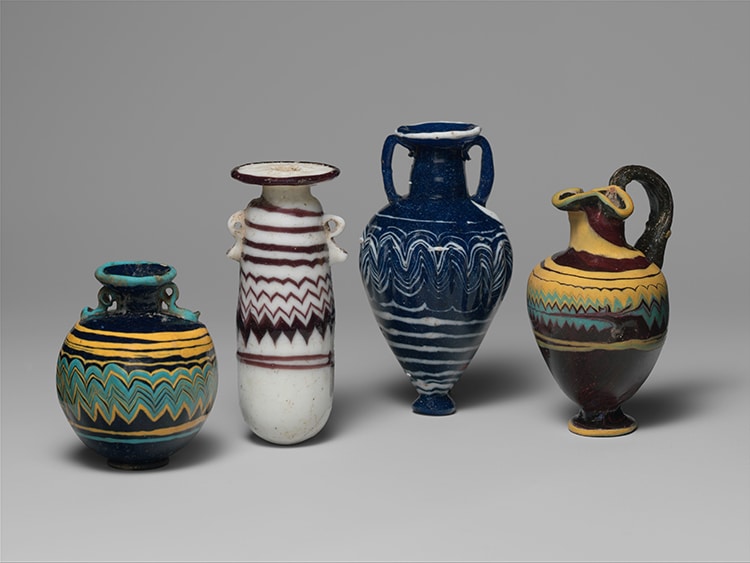
Glass alabastrons (perfume bottles) from classical Greece, during the late 6th–5th century BCE. These are. core-formed glass vessels. (Photo:The Metropolitan Museum of Art, Public domain)
You might be surprised at the long history of perfume bottles.
Scroll down to learn more about the artistic history of these vessels.
Of the surviving purpose-made vessels for perfume, ancient Egyptian examples date back to at least the Middle Kingdom.
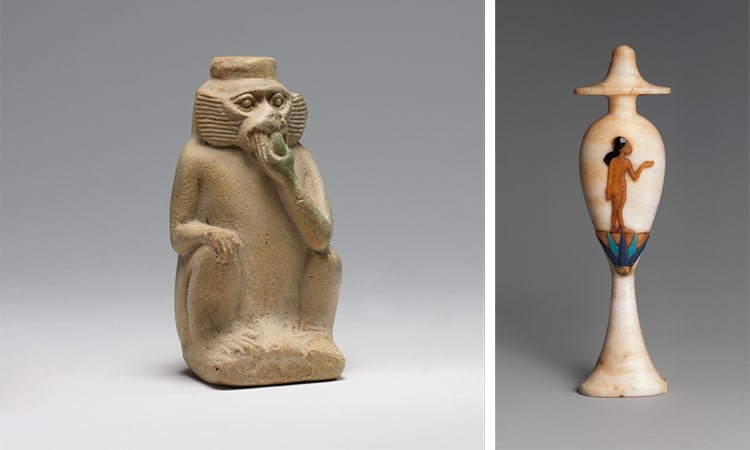
Ancient Egyptian perfume bottles.Left: A faience vessel in the shape of a monkey. This dates to the New Kingdom, circa 1550–1295 BCE |Right: A travertine perfume vessel with the figure of a princess inlaid. The vessel dates to the New Kingdom, Amarna Period, circa 1353–1336 BCE (Photos: The Metropolitan Museum of Art, Public domain)
The Egyptians had both religious and cosmetic uses for perfumes.
Colorful glass was another material frequently used for cosmetic and perfume vessels in ancient Egypt.
Faience aryballos (perfume bottles) from the 6th century BCE, Rhodes.
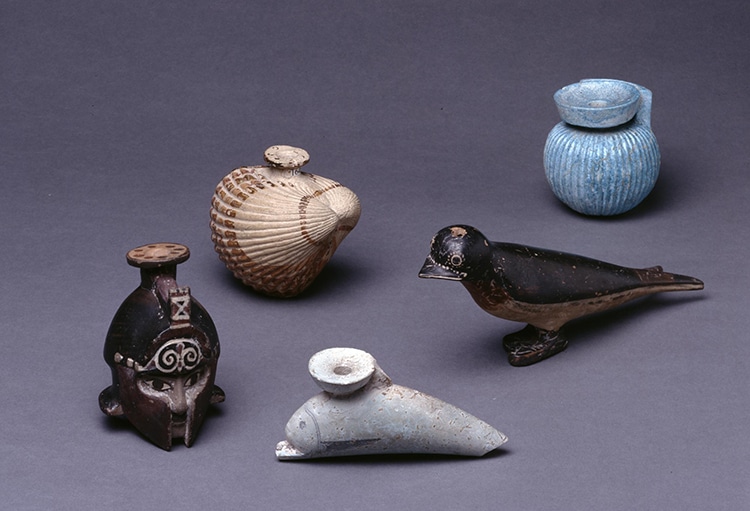
Faience aryballos (perfume bottles) from the 6th century BCE, Rhodes. (Photo:© The Trustees of the British Museum,CC BY-NC-SA 4.0)
This style of glassmaking spread to Classical Greece.
Known as alabastrons, these perfume bottles could be shaped like vials or likeamphorae.
Faience and terra-cotta were also used in ancient Greece.
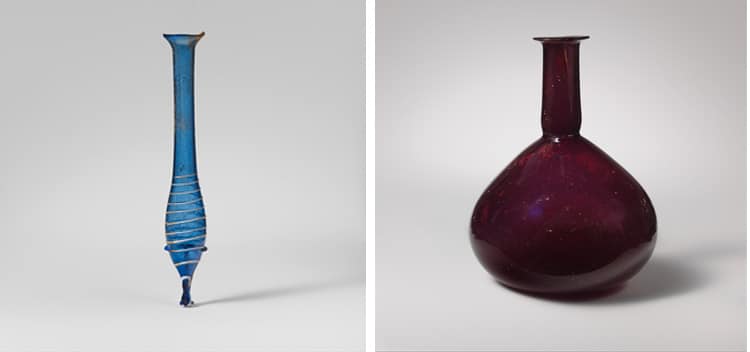
Two Roman blown glass perfume bottles, both from the 1st century CE. Theleftfeatures a white trail of wound glass, therightis a single color example. (Photos: The Metropolitan Museum of Art, Public domain)
Theleftfeatures a white trail of wound glass, therightis a single color example.
Syrian artists developed the process around the 1st century BCE.
From there, like core-forming, the technology spread to the rapidly expanding Roman Empire.
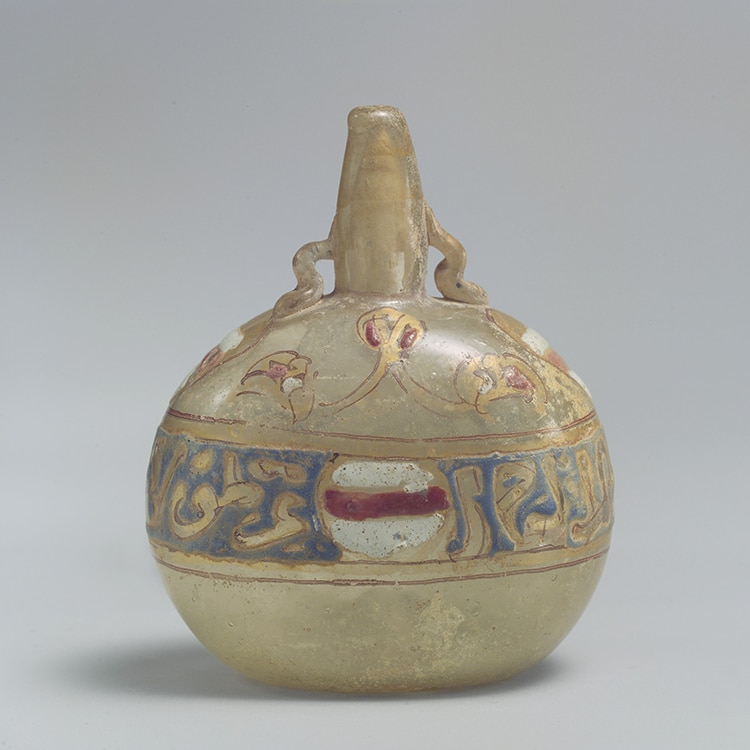
A miniature perfume sprinkler to be worn on the person. This example from late 13th or early 14th century Egypt carries the Fesse Emblem, a mark of the Mamluk sultan. (Photo:The Metropolitan Museum of Art, Public domain)
By most accounts, upper-class Romans were perfume-enthusiasts, anointing from their hair to their feet.
Blown glass opened a new art form.
TheRomans used glassfor tableware, jewelry, and of course cosmetic containers.
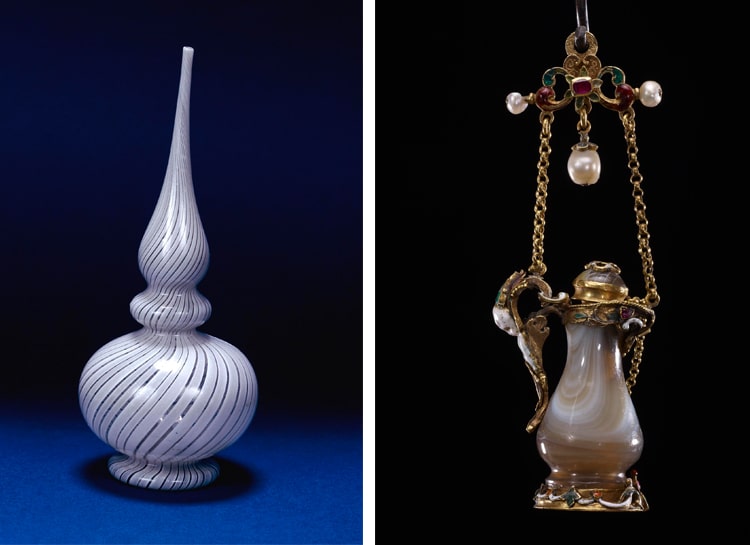
Left: Late 16th-century perfume sprinkler from Venice. |Right: A small scent bottle meant to be worn as a pendant, of agate, gold, and gemstones. This 17th-century bottle was added to in later years. (Photos: © The Trustees of the British Museum,CC BY-NC-SA 4.0)
Besides the beauty of these blown glass perfume bottles, they were non-porous and relatively affordable.
Late Medieval and Renaissance Luxury
A miniature perfume sprinkler to be worn on the person.
This process was an improvement on older perfumes, in which ingredients were crushed and mixed with oil.
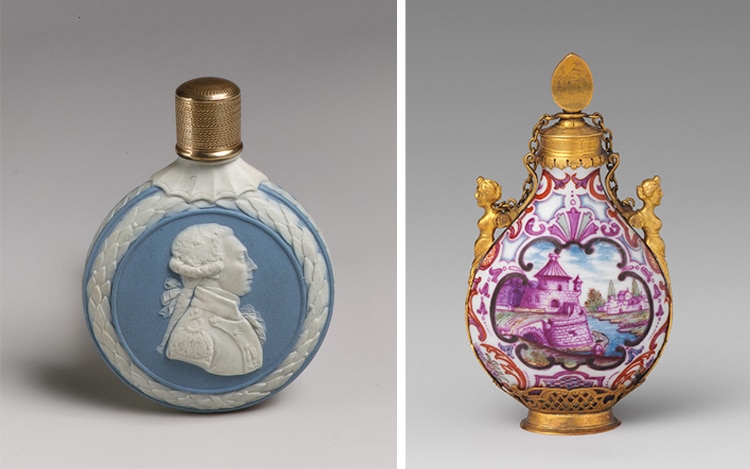
Left: Earthenware English scent bottle, created between 1770–1800. |Right: Porcelain and gold Viennese scent bottle, circa 1730. (Photos: The Metropolitan Museum of Art, Public domain)
The production of perfumes in Europe took hold in the late Middle Ages.
The need to bottle these luxurious perfumes coincided with the growing Venetian glass industry.
Left: Late 16th-century perfume sprinkler from Venice.
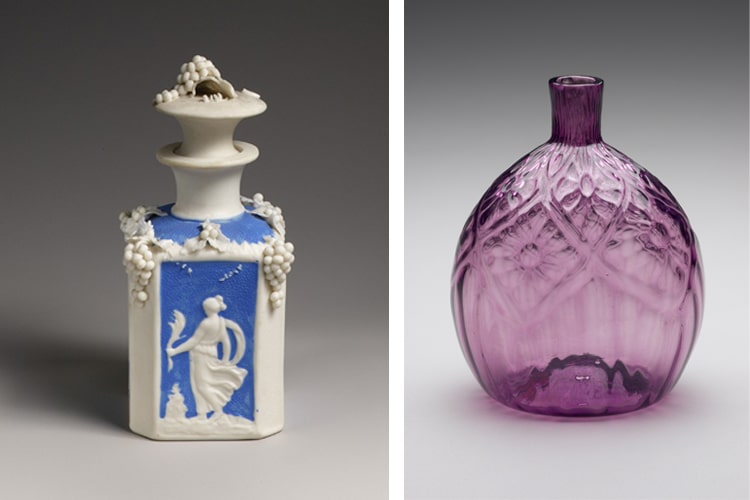
Left: American Parian porcelain perfume bottle, circa 1830–70. (Photo:The Metropolitan Museum of Art, Public domain) | Right: American blown flint glass perfume or toilet bottle crafted by Henry William Stiegel, circa 1767–84. (Photo:The Yale University Art Gallery, Public domain)
This 17th-century bottle was added to in later years.
Thisfacon de Venisespread around Europe throughout the Renaissance, as both perfumery and glassmaking gained in popularity.
She set a court fashion of perfumes laden with civet and musk, stimulating French production.
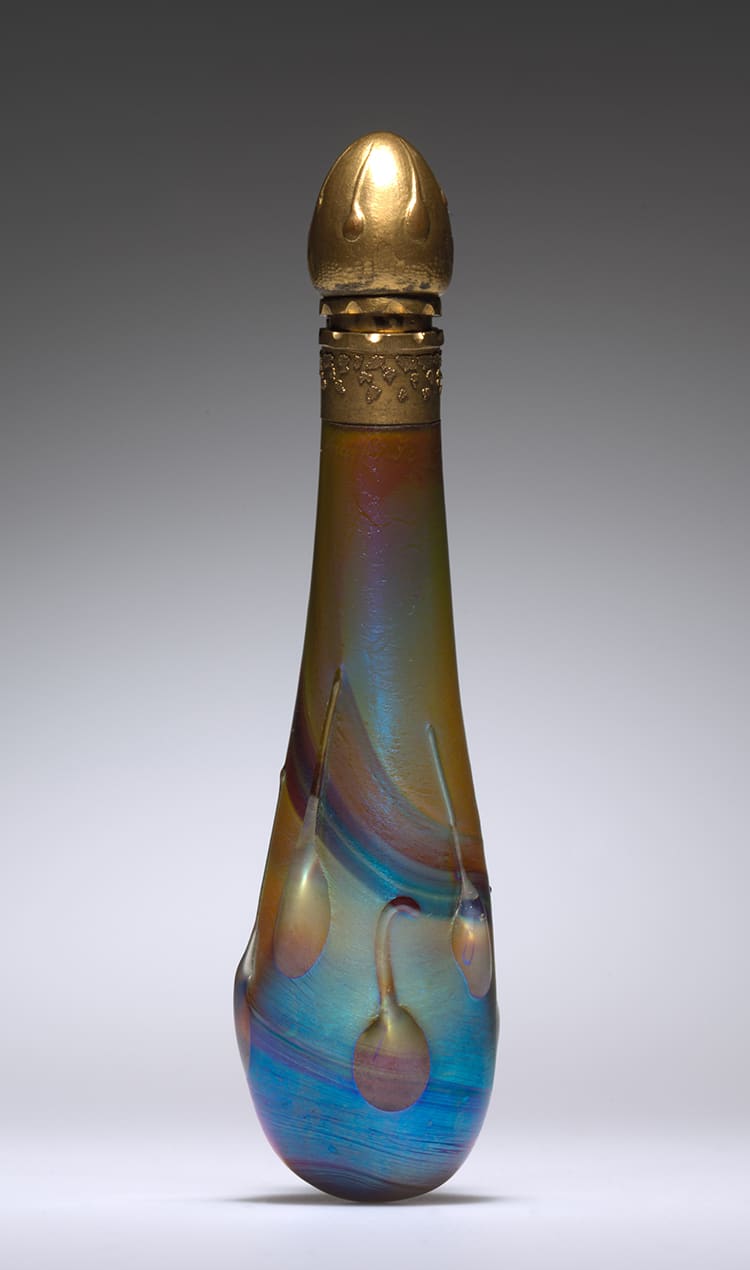
Glass and gilt perfume bottle by Louis Comfort Tiffany, circa 1900. (Photo:Wikimedia Commons, Public domain)
Perfume bottles could also be much smallerand like the pomanderworn on the person.
These personal perfumes were handy in a world where bathing and personal hygiene were not up to modern standards.
Rococo and Romantic
Left: Earthenware English scent bottle, created between 17701800.

Photo:Stock Photosfrom SAVVAPANF PHOTO/Shutterstock
|Right: Porcelain and gold Viennese scent bottle, circa 1730.
American Artistry
Left: American Parian porcelain perfume bottle, circa 183070.
Domestic production would not match imports until the late 18th century.
In the 19th century, mass production was increasingly possible due to the advancement of the Industrial Revolution.
These trended towards ornate decoration andcut or molded glass.
Modern Art and Commerce
Glass and gilt perfume bottle by Louis Comfort Tiffany, circa 1900.
French jeweler Rene Lalique became known for hisfrosted glass perfume bottles.
The perfect example is Chanel No.
5, a fragrance introduced in 1921 by designer Coco Chanel.
Photo:Stock Photosfrom SAVVAPANF PHOTO/Shutterstock
Based on a 1924 design, the Chanel No.
5 was purposefully simple in reaction to the cut-glass works of the likes of Lalique.
It was, and still is, clear; the amber-colored liquid is on full display.
By the 1930s, smaller sizes were available for the ease of the modern woman on the go.
Perfume bottles today are heavily branded, unlike the largely anonymous pieces of ancient times.
However, with careful product design, the perfume bottle remains a work of art.
Discover the Visual Culture of This Powerful Empire
What Is the Rosetta Stone?
Learn the History Behind This Legendary Ancient Artifact
10 Facts About the Parthenon, the Icon of Ancient Greece